Averting Disaster - A Guide To Computer Backups (2014)
by Brett Howse on May 21, 2014 9:00 AM EST- Posted in
- IT Computing
- Mac
- Apple
- Windows
- Cloud Computing
- macOS
Built-in Backup Tools - OS X
Apple introduced Time Machine back with the Leopard release in 2007. Time Machine is an all-in-one built-in backup utility, allowing both file and image level backups with versioning. Time Machine will back up to internal or external disks, as well as the AirPort Time Capsule which is Apple’s own NAS specifically for backups. You can also back up to another Mac running at least Leopard, and with Mountain Lion Apple added the ability to backup to multiple destinations, with the backups alternating among the backup targets to provide additional levels of redundancy. Officially, Time Machine is not supported on other NAS devices. It does not work natively with Server Message Block (SMB) or Network File System (NFS) shares but instead requires the Apple Filing Protocol (AFP). If you are not going to use an AirPort device, ensure the NAS you select specifically supports Time Machine. Time Machine is simple to use, and yet powerful enough to be an almost complete backup solution for the Mac. Let’s look at how to set it up:
- First you need to configure a backup disk. Ensure you have your backup disk connected, or your AirPort Time Capsule configured, and then open the Time Machine menu from the menu bar by clicking the Time Machine icon and choosing Open Time Machine Preferences…
- On the Time Machine menu, click Select Backup Disk…
- Here it will display the available backup targets. Choose the backup target you’d like to use, whether it is an attached hard disk or the AirPort Time Capsule and click Use Disk. If the hard disk is not formatted with HFS+, you will be prompted to erase the disk and reformat which will of course delete any data currently on the backup target.
- Now that you’ve selected a disk, Time Machine will automatically start backing up.
Time Machine does a full backup of your system, and then it starts to back up every hour. If the backup target is unavailable it will delay the backup until it is available again. Because only changes are backed up, each successive backup is relatively quick. If you would like to exclude some files from being backed up, click the Options button in the Time Machine menu to add exclusions.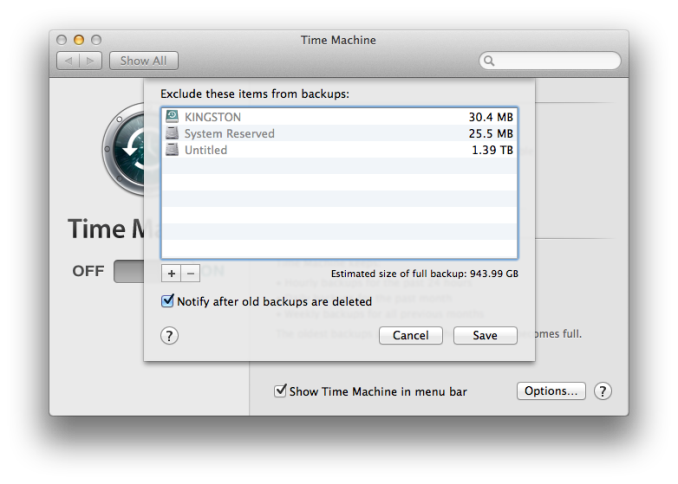
Other advanced options are not available, so there is no way to increase or decrease the frequency of backups or specify how many versions of a file to keep. The program will just back up indefinitely until it fills the available backup target, at which point it begins to delete the oldest files first.
Restoring files is relatively easy as well:
- Navigate to the folder where the file you want to recover should be (example – Documents).
- Click on the Time Machine icon in the menu bar and choose Enter Time Machine.
- This will open the restore interface, which shows a list of all of the previous backups sequentially. Using the arrows allows you to move from one backup to the next, or you can utilize the date bar on the right side which will allow you to move back to a known date. Selecting a backup date will then display the folder exactly as it was during the backup.
- Once you’ve located the file you wish to restore, select the file, and then click Restore. If the file was deleted, it will just be restored, but if the file still exists in its original location, you will be prompted to overwrite the file.
Time Machine can also be used within certain programs such as contacts, and restores operate in the same manner as files.
To restore the entire system to a previous state, hold down the Command and R keys at startup to enter the Recovery mode. In Recovery mode, one of the options is to restore from a Time Machine backup.


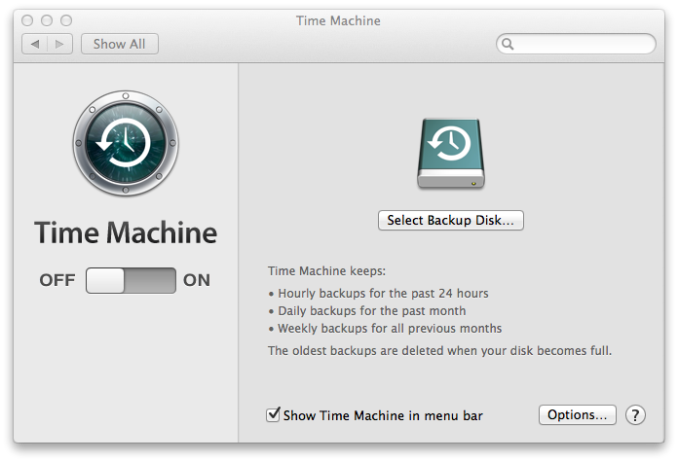
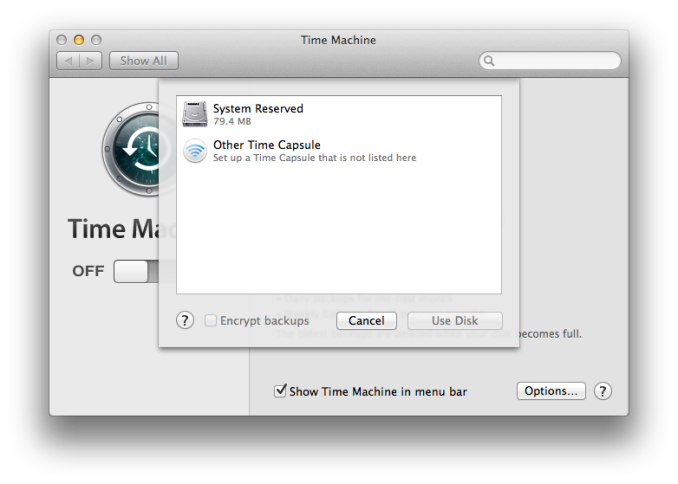
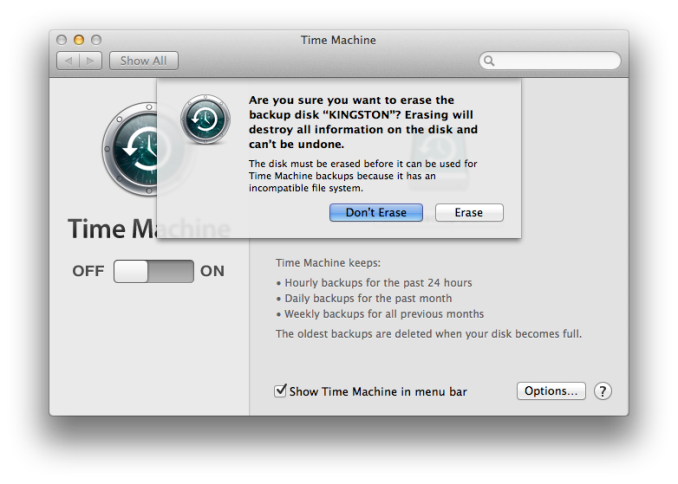






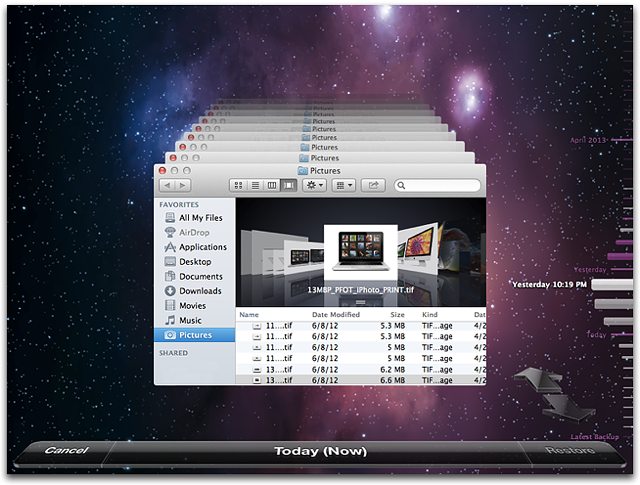








133 Comments
View All Comments
bernstein - Wednesday, May 21, 2014 - link
after fifteen years of backupping i can share the following:- user initiated (e.g. all usb, some network/cloud) backups agree with less than 0.1% of the human population (but hey it is better than nothing)
- with consumer hdds, raid5 nas are totally overrated and *in the real world* rarely protect data better than jbod.
- raid6 is better than jbod. but with consumer disks the only real alternative to jbod is zfs (linux md (which all nas employ) + consumer hdds = shaky unless you have a 24/7sysadmin...)
so either build/buy a zfs nas or backup to the cloud.
bernstein - Wednesday, May 21, 2014 - link
or buy insanely expensive enterprise disksDanNeely - Wednesday, May 21, 2014 - link
Are there any consumer grade NASes with ZFS support enabled by default now? The peanut gallery on yesterday's Synology review was arguing for ZFS being a key reason for rolling your own instead of buying an off the shelf NAS.questionlp - Wednesday, May 21, 2014 - link
There's FreeNAS Mini, which is a 4-bay NAS. I'm actually considering getting one to replace my current file server at home.DanNeely - Thursday, May 22, 2014 - link
Yikes! At $1k diskless, that's well above the typical price for a consumer nas.bsd228 - Thursday, May 22, 2014 - link
but none of them have 16G of ECC memory and a processor at this level, with dual intel gig nics and expansion ports to support a 10G or other parts. It appears to be able to transcode 3 HD streams without the benefit of the acceleration shown in this product. So, perhaps a bit of premium, but not that much.CadentOrange - Wednesday, May 21, 2014 - link
I personally use RAID1 with a 2 bay NAS that's worked fine so far. Granted that I don't have very rigorous needs, but then this isn't for enterprise critical data.Kevin G - Wednesday, May 21, 2014 - link
I've had good luck with RAID5 on small scale arrays. The main reason to go to RAID6 is due to the chance of a disk failing during the rebuild process. Consumer NAS typically are not under that much load so the rebuild times are short. In an enterprise environment where disk counts are higher in an array as well as the load on the array, using RAID6 makes sense.Personally I have an 8 drive RAIDZ2 array in a NAS4Free system that I use at home. Portability and reliability are some of the reasons I went with ZFS. So far it has been purely hands off once I got the system up and running. Admittedly it took a bit longer to get up and running as I'm doing some odd things like hosting virtual machines on the same system.
MrBungle123 - Friday, May 23, 2014 - link
The reason for RAID 6 is because statistically 1 bit out of every 10^14 bits (12TB) is bad on a hard drive... with all drives operational a RAID 5's parity can compensate for said bad bit, with a degraded RAID 5 the sector will be un-recoverable and you'll lose data. RAID 6 has double parity so even with a drive down if (when) a bad sector is encountered it is still possible to recover the data. RAID 5 is obsolete for large arrays.Kevin G - Friday, May 23, 2014 - link
If you know what sector is bad in RAID5, you can still recover the data.The tricker thing is silent corruption where all blocks appear to be OK. There an error can be detected but not necessarily which block contains it.